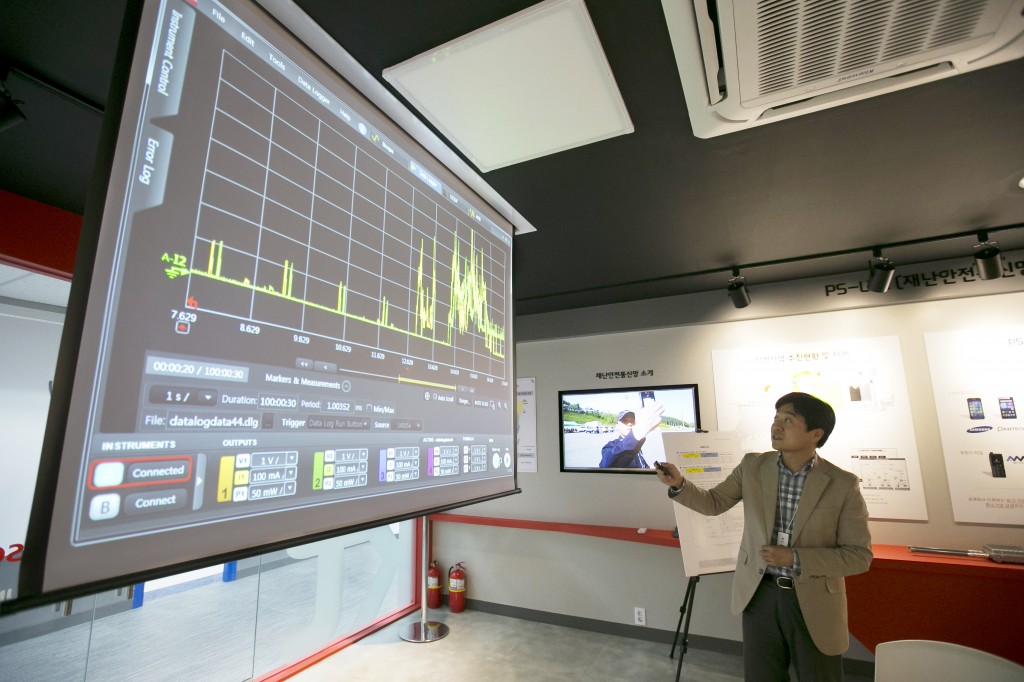Nowadays, lots of people are using smartphones. According to the Global Mobile Communications Operators Association (GSMA), the global smartphone penetration rate exceeded 50% for the first time at the end of last year and Smartphone penetration is expected to rise to 75% by 2020. In all regions except sub-Saharan Africa, smartphones are more popular than feature-phones. Korea’s smartphone penetration rate is 85%, which is the world’s highest level.
The steady rise in smartphone penetration was caused by multiple effects; such as subsidies and promotional activities by mobile operators as well as competition from manufacturers to cut prices of smartphone. Apple and Samsung’s smartphone competition, which was triggered by the launch of the iPhone, is now becoming more intense as the Chinese manufacturers are entered the race for the competition.
While the penetration rate of smartphones has been rising, smartphones battery shortage has been occurred. According to trend monitor of Korean market research institute in 2016, 79.9% of smart users feel that smartphone battery is lacking, and 62.6% feel anxiety about battery shortage and discharge. Despite the continued growth in battery capacity due to technological advances, consumers are still experiencing battery shortages as their usage time and power consumption increase.
Among the three major telecom companies in Korea, KT approached the network side to overcome battery limitations. ‘Connected mode Discontinuous Reception’ (C-DRX), which reduces power consumption by minimizing the network access time of smartphones, was applied to the nationwide network from April 1 for the first time in Korea. The C-DRX is a network technology that efficiently controls battery usage by switching to a low power mode periodically when a smartphone communicates with a communication network.
NTT DOCOMO, Vodafone, Verizon, AT & T, and China Mobile have commercialized ‘C-DRX’ standard technology ahead of Korea. The reason why introduction of ‘C-DRX’ commercialization is delayed in Korea is that because Korea is a leader in IT, consumers are more concerned about the quality of communication service and quality than other countries and KT has focused on fulfilling it.
KT had a data loss rate of 0.14% as a result of the first C-DRX test two years ago, which was lower than the US 0.83% and 0.34% in Japan, but higher than the domestic average of 0.06. In order to solve this problem, KT succeeded in improving various problems through continuous research and testing for two years and lowering it to below Korea’s average.
In addition, based on accumulated ICT business experience and expertise, KT is developing products that combine customized ICT services and solutions for the global market. Recently they have been expanding into the Central / South America market in the following areas: 1) Telecommunication Infrastructure Evolution & Innovation 2) Converged ICT Business 3) Submarine Cable Construction Business.
KT’s technology has been favorably noticed in the global market, including the Micro Energy Grid (KT-MEG), the smart energy control platform awarded by MWC in Barcelona in March. In order to secure the initiative of 5G, which is being promoted as the core infrastructure of KT, they are concentrating efforts on implementation of the pilot service of the PyeongChang Winter Olympic Games in 2018 and commercialization in the world for the first time in 2019. They are also expanding into five platforms: intelligent network-based media, smart energy, financial transactions, disaster safety, and corporate / public value enhancement.
KT is worth to be a global No.1 player through the success of its 5G-based intelligent network and five platforms. Going forward, KT will continue to strive to provide differentiated value in the global business area based on its KT vision.
Sunny Seon
K-Herald Korea
(Los Angeles Times Advertising Supplement)




